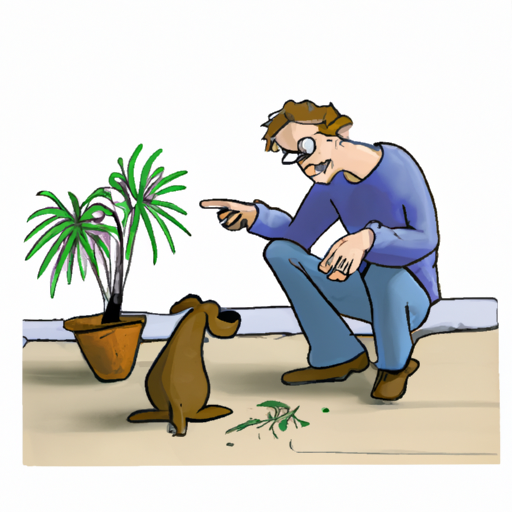Introduction
As an owner, you have the crucial task of guiding your dog’s behavior. Dogs, like humans, learn from their mistakes, and it’s your responsibility to ensure they understand when they’ve done something wrong. However, this process requires understanding, patience, and a gentle approach. Let’s delve into this topic and explore the best ways to go about it.
1. Importance of Timing
The first thing you need to consider is timing. Dogs don’t have the same concept of time as humans do. If you scold your dog hours after they’ve done something wrong, they won’t be able to make the connection. Instead:
- React immediately to the behavior you want to correct.
- Use a stern, but not angry, tone of voice.
- Immediately redirect them to the correct behavior or action.
2. Using the Right Tone
Your tone in correcting your dog’s behavior is exceedingly important.
- Avoid shouting or expressing anger, as this may only scare your dog.
- Use a firm, stern tone to let your dog know you disapprove of their behavior.
- Praise them in a soft, cheerful voice when they follow your commands to reinforce good behavior.
3. The Power of Non-Verbal Cues
Dogs are highly attuned to human body language. Here are some non-verbal cues you can use:
- A stern look can convey your disapproval.
- Ignoring your dog immediately after their misbehavior can be a powerful signal.
- Rewarding good behavior with petting and positive attention reinforces the right actions.
4. Consistency Is Key
Consistency helps your dog understand what is expected of them.
- Always correct the same behaviors every time.
- Use the same commands and responses for specific behaviors.
- Encourage all family members to enforce the same rules and commands.
5. The Role of Rewards
Reward-based training is an effective method for teaching dogs right from wrong.
- Immediately reward your dog for correct behavior.
- Use treats, toys, or affection as rewards.
- Gradually phase out treats as your dog learns and responds to your commands.
| Method | Usage |
|---|---|
| Treats | Useful for initial training stages. |
| Toys | A good reward for play-based training. |
| Affection | A constant reward that can accompany any other method. |
6. Avoid Physical Punishment
Physical punishment is not only cruel and unnecessary, but it also doesn’t teach your dog the correct behavior.
- It can lead to fear, anxiety, and aggression.
- Use time-outs or removal of privileges instead.
- Always reinforce the correct behavior and reward it.
7. Training Classes
If you’re struggling with training, consider enrolling your dog in training classes.
- Professional trainers can teach you effective techniques.
- Training classes provide socialization opportunities for your dog.
- They can help address specific behavioral issues.
8. Understanding Your Dog
Remember, every dog is an individual with their own personality and learning pace. Understanding your dog’s personality, breed tendencies, and past experiences can help make training more effective.
Frequently Asked Questions
Q1: What if my dog keeps repeating the wrong behavior?
A: This could be an indication that your training methods aren’t working, and you may need to try a different approach or seek professional help.
Q2: Can old dogs be trained?
A: Yes, dogs of any age can learn new behaviors and commands. It may take more time and patience with older dogs, but it’s certainly possible.
Q3: How long should training sessions be?
A: Keep training sessions short and sweet, ideally not more than 15 minutes at a time. Several short training sessions throughout the day are more effective than one long session.
Q4: What should I do if I can’t handle my dog’s behavior?
A: If you’re struggling with your dog’s behavior, seek the help of a professional dog trainer or behaviorist. They can provide guidance and strategies tailored to your dog’s specific needs.
In conclusion, teaching a dog to understand they did something wrong should be a process filled with patience, consistency, and love. Remember, your aim is not just to correct a particular behavior but to foster a bond of mutual respect and understanding with your furry friend.



